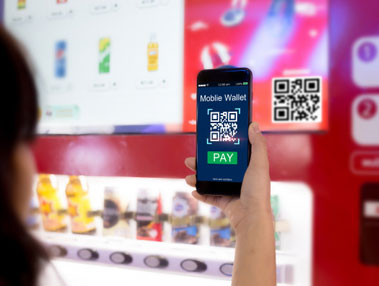Change is only a constant thing. With the evolving needs of shoppers, the retail industry is trying hard to catch up with technology and new shopping behaviors. The revolution in retail practices over a decade with the advancement and integration of technology is worth appreciating.
Experts believe the sustainability of a dynamic retail market structure is possible with the adoption of technology and digital trends. The smart shoppers are exploring customized experiences and looking forward to interacting with their favorite brands, which is changing the game in the retail industry.
Rightly said, every coin has two sides, similarly, the retail industry is getting disrupted by emerging technologies, since with the growth in mobile shopping, the industry is gradually shifting to accommodating the needs of digital customers.
Retailers are fighting for each visit to their stores with E-commerce driving the digital retail industry. E-commerce is significantly hampering the profitability of retail industry and forcing it to speed-up.
Discovering the unlimited opportunities by e-commerce has become a necessity for the retail industry. The changing customer behavior is well recognized by e-commerce, which capitalizes on the consumer behavior of buying the discounted product, regardless of its immediate necessity.
Thus, the business model is changing with more focus on quantity to boost sales and conversion rates. The e-commerce retail industry has clearly a long way to go and has become the 'new normal'.
Emerging Retail Technology Trends
The technology is transforming the shopping and retail operations dramatically. Be it speed, or agility, the emerging trends in the retail industry is changing the game entirely and forcing it to speed up. The eCommerce trends that are disrupting the retail industry are:

The addiction to online shopping continues to grow.
The retail industry understands the addictive disorder of its shoppers and is able to make out which customer will buy what product at what price with the help of an algorithm that replaces the purchase-related decisions in such a manner that sets the product price based on the buying behavior of the consumer. The projected sales of e-commerce by 2021 is expected to be $4.5 trillion.
Artificial Intelligence(AI) and Machine Learning(ML) driving real emotions.

The evolution of artificial emotional intelligence and machine learning is helping the retail industry to identify customer emotions and incorporate them into their advertisements. The tools like automated marketing platforms, AI-based pricing, discounting, and chatbots will enhance the hyper-personalization.
Augmented/Virtual Reality and 3D technology building the virtual worlds.
Gone are the days when it was difficult for the customers to imagine how the product will look on them or their home/office. The AR/VR technology is allowing its users to try things virtually before buying. The technology is integrating customization and on-demand delivery to maintain a competitive edge.
Internet of Things (IoT)and 5G technology making ready for the future.
With the increasing number of IoT devices and 5G technology, advancements like automated checkouts, smart shelves, and personalized discounts are possible. IoT is helping the e-commerce based retail industry to maintain an optimum inventory and increase their efficiency by exploring omnichannel presence. By 2021, 73% of eCommerce sales are expected to be done through mobile.
Expanding data collection and analytics luring more customers.

Big Data is almost everywhere and is allowing the retail industry to fetch customer data from point of sale (PoS) to website cookies that help in understanding the needs of the customer and luring them to buy the products.
Voice shopping and social media boosting the number of shoppers.
The voice shopping is at its initial stage; however, the rising number of social shoppers is helping the eCommerce to boost its sales significantly. Voice shopping allows its users to do handsfree interface that enables faster and easier shopping.
QR Codes making a comeback.

QR code payments are once again gaining popularity due to their ease of use and security. Many Asian countries like China are using QR code payments for their maximum online shopping.
Real Life Use Cases in the Retail Industry
Product Recommendations
Upsell or cross-sell the closest item with an intelligent product recommendation system.
Read More
Personalization
Let your customer feel excited and appreciated by providing unique experiences.
Read More
Supply Chain Optimization
Allow your business to grow at the right pace with end-to-end supply chain management.
Read More
Related Articles
Achieving Success Through Innovative Solutions
Transforming client businesses through state-of-the-art creativ
Key Challenges in the Retail Industry
Technology grows and so does the challenge of managing cybersecurity.
Technological advancement brings along a cyberthreat, which makes the personal and sensitive data of online shoppers the soft target of hackers. The vulnerabilities of threat include DDoS (Distributed Denial of Service) attacks, PoS (Point of Sale) frauds, insider risks, click fraud, cashback frauds, loyalty program frauds that can be mitigated with the help of functional testing and data analytics.
Machine Learning algorithms creating a barrier to innovation.
Machine Learning Algorithms usually require huge data to arrive at useful insight, so the retail industry is finding it difficult and expensive to acquire, use, and host big data. The larger the retail ecosystem, the greater its vulnerability. The solutions to combat this challenge can be developed with advanced machine learning solutions that will remove the barriers to innovation.
A variety of payment gateways bothering customers.
The retail industry (E-Commerce) has to offer a huge variety of payment options to its customers like a Credit card, e-wallets, debit card, net banking, COD, etc, which is bothering the customers to share their personal information. Many are opting for the COD option, which is increasing the number of return percentages and further poor logistics and supply chain issues.
The struggle of retailers in developing technological assets
The silo structure is seriously threatening the existence of retailers. With big companies investing heavily in IT infrastructure, the small retailers are finding it difficult to cope with dynamic technology. Moreover, choosing the right digital model may help to overcome this challenge.
Hyper-personalization is not as easy as it seems
With the emergence of hyper-personalization, managing the repository of customer's data is becoming challenging since more data leads to more choices and more confusion. Using data in the right way and developing IT infrastructure will help to combat this problem; however, integrating the continuously evolving IT system is not easy.
Consumer spoiled for choice
The growing competition has spoiled the choices of the consumer, which makes it difficult for the retail industry to attract the right customer, generate traffic, capture leads, and convert visitors to customers (Low conversion rate).
Abandoning shopping cart adding to the woes
The retail industry (E-Commerce) is witnessing a high number of shopping cart abandonment issues, which is resulting in losses. The well-designed check-out process may be helpful and convert this challenge into sales.
Research shows, many companies in the retail industry do not have the right technology operating model that will help to enhance data-driven decision making. The endless shopping boundaries bring in new opportunities that if exploited smartly, will help to survive in the digital ecosystem. Thinking personalization is essential, from experiences to products and services, consumers are willing to pay for customization and value, so the companies will need to focus on curating compelling experiences. Digitalization is the future, retailers are not left with any choice but to use and adapt the power of the digitally empowered era either from the fear of being left behind or outperforming the competitors.
Everything is possible in retail, but without technology nothing is achievable








